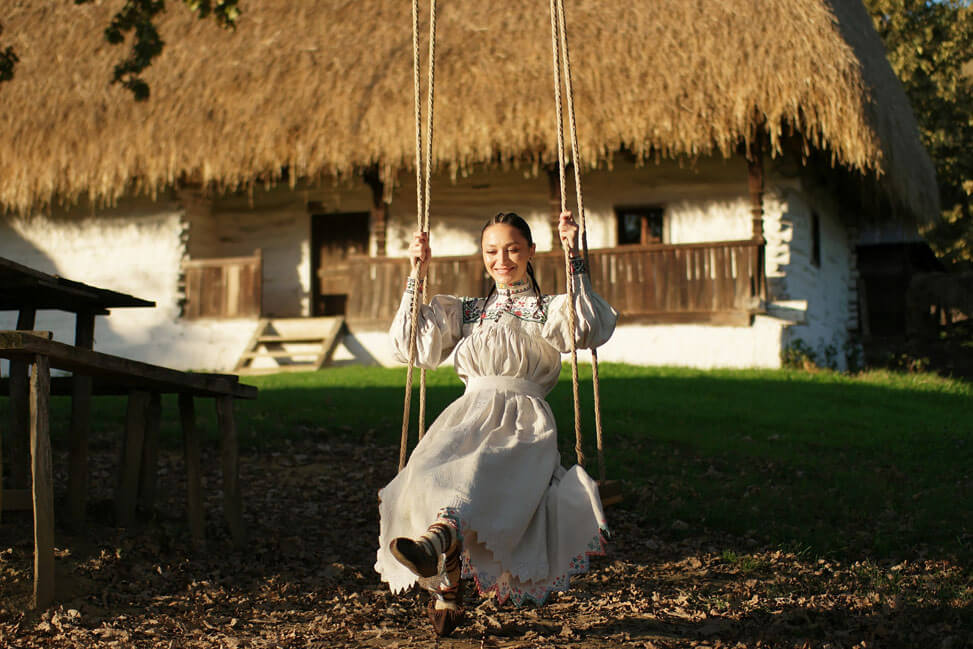In the kaleidoscope of world cultures, few can rival the rich tapestry of China’s sartorial heritage. Rooted in millennia of history, traditional Chinese clothing is not just a form of dress but a living testament to the nation’s diverse cultural mosaic, reflecting its dynastic epochs, regional nuances, and timeless aesthetic principles. welcome to our journey through the intricate folds of traditional Chinese attire, where every garment tells a story and every stitch weaves a narrative of tradition and innovation.
Clothing throughout the major dynasties
From the refined simplicity of the Han dynasty to the opulent grandeur of the Qing, each era brought its own distinctive style to the forefront of Chinese fashion. Let’s embark on a journey through time, exploring the evolution of clothing throughout the major dynasties.
Han dynasty
During the Han Dynasty (206 BCE – 220 CE), clothing played a significant role in reflecting social status and cultural identity. The attire was characterized by loose-fitting robes, known as Hanfu, which typically consisted of a cross-collar robe and a long skirt for women or trousers for men. Fabrics such as silk and hemp were commonly used, and clothing styles varied based on one’s rank and occupation. Accessories like sashes, belts, and hair ornaments were also popular, adding flair to the ensemble.
Tang dynasty
The Tang Dynasty (618–907 CE) is often regarded as a golden age of Chinese civilization, and its clothing reflected the era’s prosperity and cosmopolitanism. Fashion during this time was characterized by vibrant colors, elaborate patterns, and luxurious fabrics such as silk and brocade. Both men and women wore layered garments, with women’s attire featuring elaborate hairstyles adorned with flowers and jewels. The iconic “ruqun” ensemble, consisting of a high-waisted skirt and a long, flowing robe, became emblematic of Tang fashion.
Ming dynasty
The Ming Dynasty (1368–1644 CE) witnessed a revival of traditional Chinese clothing after the Mongol Yuan Dynasty. Ming attire was characterized by a return to simplicity and elegance, with a focus on refined craftsmanship and intricate details. Women’s clothing often featured wide-sleeved robes with elaborate embroidery, while men’s attire consisted of long gowns with distinctive collars and cuffs. Fabrics like silk and satin remained popular, and colors were typically rich and subdued, reflecting the dynasty’s conservative values.
Qing dynasty
The Qing Dynasty (1644–1912 CE) marked the final imperial dynasty of China, and its clothing reflected a blend of Manchu and Han Chinese influences. The qipao, or cheongsam, emerged as a popular garment for women during this period, characterized by its form-fitting silhouette and high neckline. Men’s clothing, influenced by Manchu attire, featured long robes known as changshan or magua, often paired with wide-legged trousers. The use of intricate embroidery and luxurious fabrics remained prevalent, symbolizing wealth and status.
Throughout these dynasties, Chinese clothing evolved in response to changes in politics, society, and culture, yet it retained a distinct aesthetic and cultural identity that continues to inspire designers and enthusiasts to this day.
Popular types of traditional Chinese clothing
Qipao
The qipao, also known as the cheongsam, is a form-fitting, one-piece dress that originated in the Qing Dynasty but gained popularity in the 1920s Shanghai fashion scene. Characterized by its high neckline, form-fitting silhouette, and side slits, the qipao exudes elegance and femininity. Originally worn by Manchu women, it underwent various modifications over time, incorporating elements from Western fashion while retaining its traditional charm. Today, the qipao is worn on formal occasions, weddings, and cultural events, symbolizing grace and sophistication.
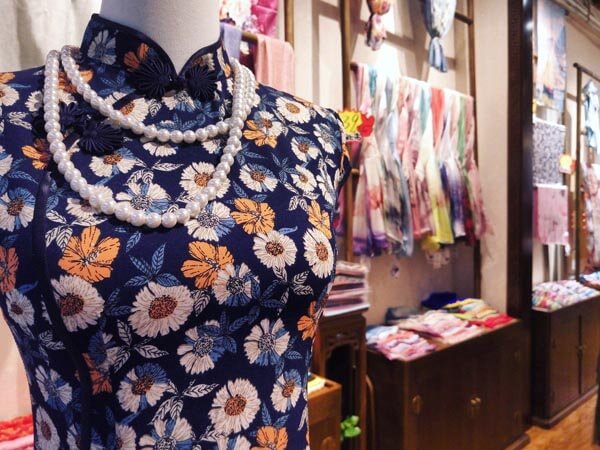
Hanfu
Hanfu refers to traditional Chinese clothing worn during the Han Dynasty and revived in modern times as a cultural movement. It encompasses a wide range of styles, including robes, jackets, and skirts, characterized by loose, flowing cuts and intricate embroidery. Hanfu emphasizes natural fabrics such as silk and cotton and often incorporates elements of Chinese art and literature in its design. Worn by both men and women, Hanfu has experienced a resurgence in popularity, with enthusiasts embracing it as a symbol of cultural pride and heritage.
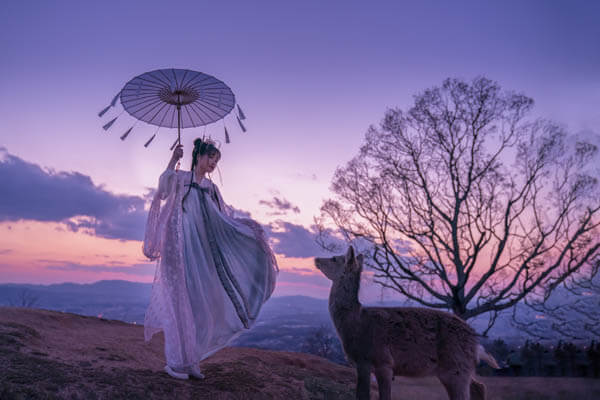
Changshan
The changshan, also known as the Zhongshan suit, is a type of traditional Chinese male attire introduced during the Qing Dynasty and popularized by Dr. Sun Yat-sen, the founding father of the Republic of China. It consists of a long, button-up jacket with a Mandarin collar, typically worn over trousers. The changshan reflects a fusion of Manchu and Western influences, featuring elements such as tailored cuts, button closures, and functional pockets. It became a symbol of modernity and nationalism during the early 20th century and remains a popular choice for formal occasions and ceremonies in contemporary Chinese culture.
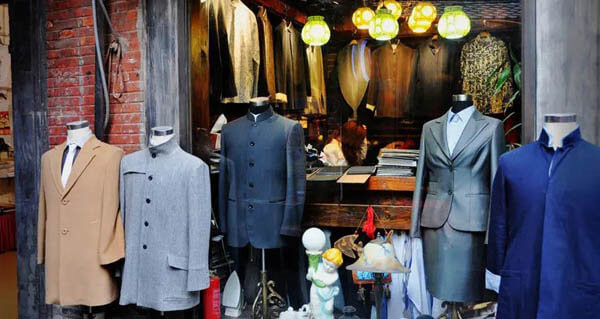
These three types of traditional Chinese clothing showcase the diversity and richness of China’s sartorial heritage, each embodying unique cultural symbolism and historical significance. Whether it’s the graceful qipao, the timeless hanfu, or the dignified changshan, these garments continue to captivate hearts and minds, bridging the past with the present in a celebration of tradition and style.
Traditional clothing of other ethnic minorities
China is home to 55 ethnic minorities, each with its unique and rich cultural heritage, including traditional clothing that reflects their distinct identities and customs. Here’s a glimpse into the traditional attire of four prominent ethnic groups:
Dai Ethnic Minority (傣族)
The Dai people, primarily residing in southwestern China’s Yunnan Province, have a distinct traditional attire that reflects their cultural heritage. Traditional Dai clothing is characterized by bright colors, intricate embroidery, and elaborate patterns. Women typically wear long, flowing skirts adorned with floral motifs, paired with fitted jackets and colorful scarves. Men often wear loose-fitting shirts and trousers, sometimes accessorized with turbans or headscarves. Bamboo hats and silver jewelry are also common accessories in Dai attire.
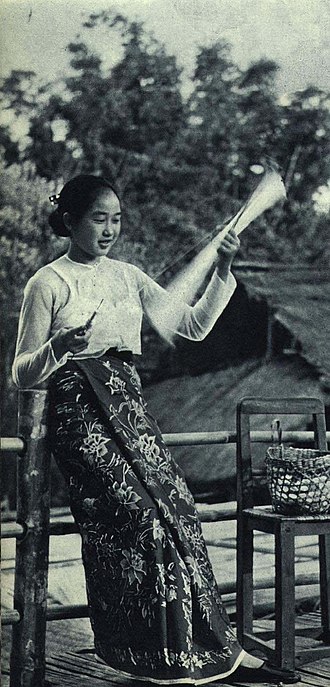
Tibetan Ethnic Minority (藏族)
Tibetan traditional clothing, known as chuba, is well-suited for the harsh climate of the Tibetan Plateau. The chuba is a long, loose robe made from thick, woolen fabric, with wide sleeves and a high collar to provide warmth. Tibetan clothing is often adorned with intricate brocade, appliqué, and embroidery, showcasing the region’s rich artistic heritage. Both men and women wear variations of the chuba, with women’s attire typically featuring more colorful embellishments and jewelry, such as turquoise and coral beads.
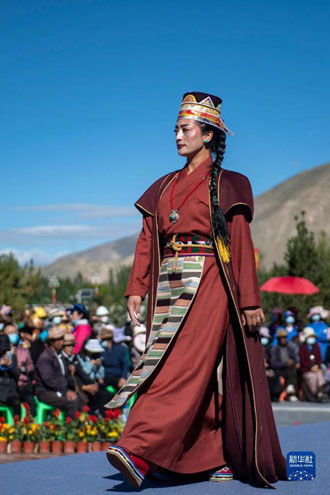
Uyghur Ethnic Minority (维吾尔族)
The Uyghur people, primarily residing in China’s Xinjiang Uyghur Autonomous Region, have a diverse cultural heritage reflected in their traditional clothing. Uyghur attire blends elements of Central Asian and Islamic styles, with vibrant colors and intricate patterns. Women often wear long, flowing dresses with embroidered collars and sleeves, paired with colorful headscarves. Men traditionally wear long robes or coats, known as doppa, along with embroidered caps and leather boots. Uyghur clothing emphasizes modesty and practicality while incorporating cultural symbols and motifs.
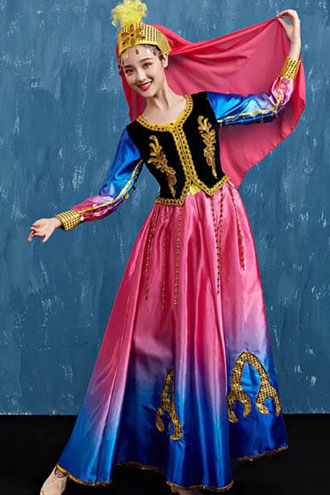
Zhuang Ethnic Minority (壮族)
The Zhuang people, one of China’s largest ethnic minorities, have a rich tradition of clothing that varies across different regions. Traditional Zhuang attire often features bright colors, bold patterns, and elaborate embroidery, reflecting the group’s vibrant cultural identity. Women’s clothing typically includes pleated skirts, embroidered blouses, and ornate headdresses adorned with silver ornaments. Men commonly wear jackets and trousers made from handwoven fabrics, along with turbans or embroidered caps. Zhuang clothing reflects a deep connection to nature and community, with motifs inspired by local flora and fauna.
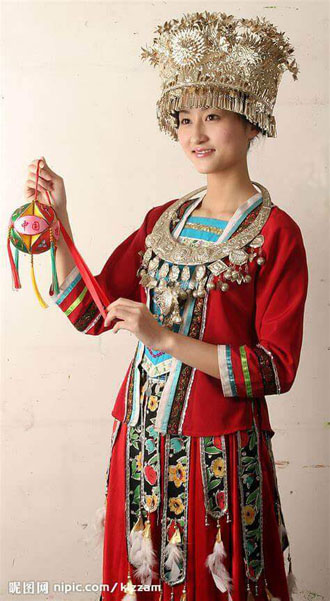
Each of these ethnic minorities in China has a unique cultural identity expressed through their traditional clothing, showcasing a diverse tapestry of styles, techniques, and symbolism.
Traditional clothes in modern China
Traditional clothing in modern China serves as more than just a mode of dress; it’s a symbol of pride, a vehicle for cultural recognition, and even a canvas for haute couture. Let’s delve into how it manifests in these realms:
Source of Pride and Cultural Recognition
In modern China, traditional clothing is increasingly seen as a source of pride and a means of cultural recognition. As the country embraces its rich history and diverse ethnic heritage, there’s a renewed appreciation for traditional attire. Whether it’s the elegant qipao, the regal hanfu, or the dignified tangzhuang, these garments evoke a sense of nostalgia and cultural identity. Wearing traditional clothing has become a way for individuals to express their connection to Chinese heritage and showcase it proudly to the world.
Formal Occasions
Traditional clothing continues to hold sway in formal occasions across China. From weddings to business events, there’s a timeless elegance associated with donning traditional attire. For weddings, brides may opt for intricately embroidered qipaos or elaborate hanfu, while grooms may choose the refined tangzhuang. These garments not only lend a touch of sophistication to the occasion but also pay homage to age-old customs and traditions. Even in corporate settings, traditional clothing can make a statement, conveying a sense of cultural heritage and respect for tradition.
Haute Couture
Traditional Chinese clothing has also found its place in the world of haute couture and high fashion. Renowned designers are drawing inspiration from traditional motifs, fabrics, and silhouettes to create modern interpretations of classic garments. From runway shows to red carpet events, we see celebrities and fashion icons embracing traditional Chinese attire with contemporary flair. These haute couture creations not only showcase the craftsmanship and artistry of traditional clothing but also elevate it to the realm of global fashion, fostering cross-cultural appreciation and dialogue.
In essence, traditional clothing in modern China transcends mere fashion; it’s a reflection of cultural pride, a marker of formal occasions, and a canvas for artistic expression. Whether worn on special occasions or incorporated into haute couture designs, traditional attire continues to evolve and captivate, bridging the past with the present in a celebration of heritage and style.
The new face of Chinese fashion?
The new face of Chinese fashion is a dynamic fusion of tradition, innovation, and global influence. As China’s economy and influence on the world stage continue to grow, so does its fashion industry. Here’s how the landscape is evolving:
Cultural Reinterpretation
Chinese fashion designers are reimagining traditional elements in fresh, contemporary ways. From incorporating traditional embroidery techniques into modern silhouettes to reviving ancient motifs in avant-garde designs, there’s a renewed interest in celebrating China’s rich cultural heritage. This blend of old and new creates a unique aesthetic that resonates both domestically and internationally.
Global Influence
China’s fashion scene is increasingly shaping global trends and influencing the international fashion market. Chinese designers are gaining prominence on the global stage, with their designs being showcased at major fashion weeks and worn by celebrities worldwide. Moreover, Chinese consumers’ purchasing power and fashion sensibilities are driving demand for luxury brands and shaping the direction of global fashion trends.
E-commerce and Technology
China’s booming e-commerce market and tech-savvy consumers are revolutionizing the way fashion is consumed and marketed. Online platforms like Tmall and JD.com have become major players in the fashion industry, offering a vast array of domestic and international brands to Chinese consumers. Additionally, innovations in technology, such as virtual fitting rooms and livestreaming fashion shows, are reshaping the retail experience and driving sales.
Sustainability and Social Responsibility
There’s a growing awareness and emphasis on sustainability and social responsibility within China’s fashion industry. From eco-friendly materials and ethical manufacturing practices to initiatives promoting diversity and inclusion, Chinese fashion brands are embracing values that resonate with socially conscious consumers. This shift towards sustainability is not only driven by consumer demand but also reflects a broader societal awareness of environmental and social issues.
Youth Culture and Streetwear
China’s younger generation is reshaping the fashion landscape with their embrace of streetwear and urban style. Influenced by global street culture and social media, Chinese youth are driving trends in streetwear, sneaker culture, and urban fashion. This burgeoning youth culture is fueling the rise of homegrown streetwear brands and creating a vibrant street fashion scene in cities across China.
Tradition Chinese clothing vocabulary
| Chinese Term | English Translation | Description |
| 旗袍 (qípáo) | Cheongsam | A fitted one-piece dress with a mandarin collar and side slits, popularized in the early 20th century. |
| 立领 (lìlǐng) | Mandarin collar | A high, straight collar that stands up around the neck, characteristic of the qipao. |
| 开叉 (kāichā) | Side slits | Vertical openings on the sides of the qipao, allowing for ease of movement and adding a touch of elegance. |
| Chinese Term | English Translation | Description |
| 汉服 (hànfú) | Han Chinese clothing | A broad term encompassing various clothing styles worn by the Han Chinese people throughout history. |
| 上衣 (shàngyī) | Upper garment | Refers to the top piece of clothing in Hanfu, including styles like ruqun (a robe-like garment) or jianzi (a short jacket). |
| 下裳 (xiàs裳) | Lower garment | Refers to the bottom piece of clothing in Hanfu, including styles like quju (a long skirt) or ku (pants). |
| 腰带 (yāodài) | Belt | A sash or band worn around the waist to secure or accentuate the Hanfu. |
| 广袖 (guǎngxiù) | Wide sleeves | A common feature of Hanfu garments, providing a flowing and graceful appearance. |
| 交领 (jiāolǐng) | Cross-collar | A style of collar in Hanfu where the garment wraps over itself and fastens at the center of the chest. |
| Chinese Term | English Translation | Description |
| 长衫 (chángshān) | Long gown | A loose-fitting robe traditionally worn by men and women, often associated with scholars and officials. |
| 直筒 (zhítǒng) | Straight cut | A simple and classic style of the changshan, with straight lines from shoulder to hem. |
| 盘扣 (pánkòu) | Frog buttons | Decorative button closures made of braided cords or knots, a distinctive feature of the changshan. |
| Chinese Term | English Translation | Description |
| 斗篷 (dòupèng) | Cloak | A loose outer garment worn over other clothing, often for protection from the elements. |
| 头饰 (tóushì) | Headwear | Accessories worn on the head, such as hats, hairpieces, or ornaments. |
| 鞋履 (xiéyè) | Shoes | Footwear worn on the feet, including various styles like boots, sandals, or slippers. |
| 袜子 (wàzi) | Socks | Foot coverings worn to keep the feet warm and protected. |

